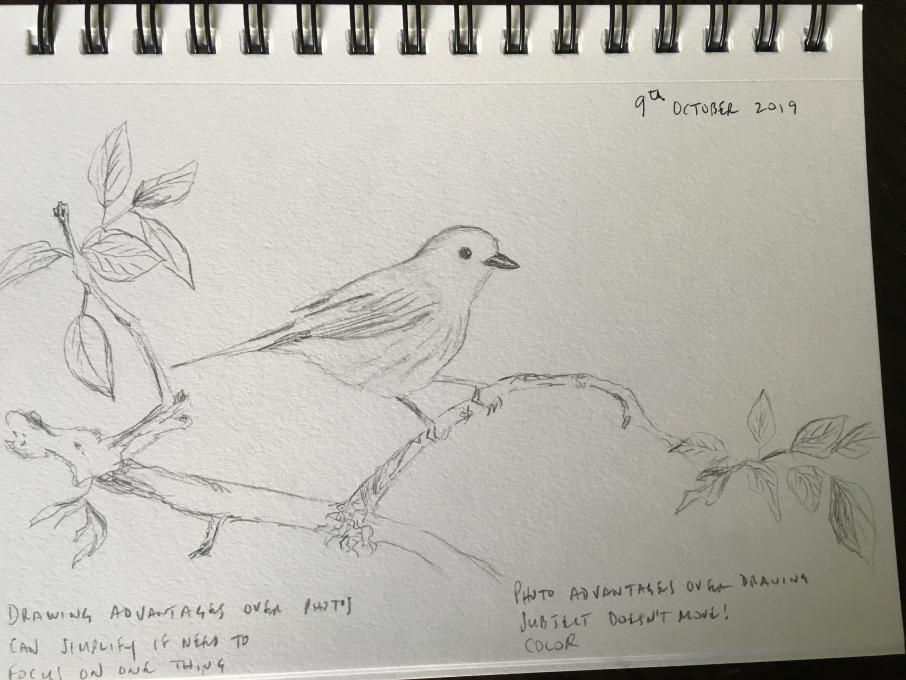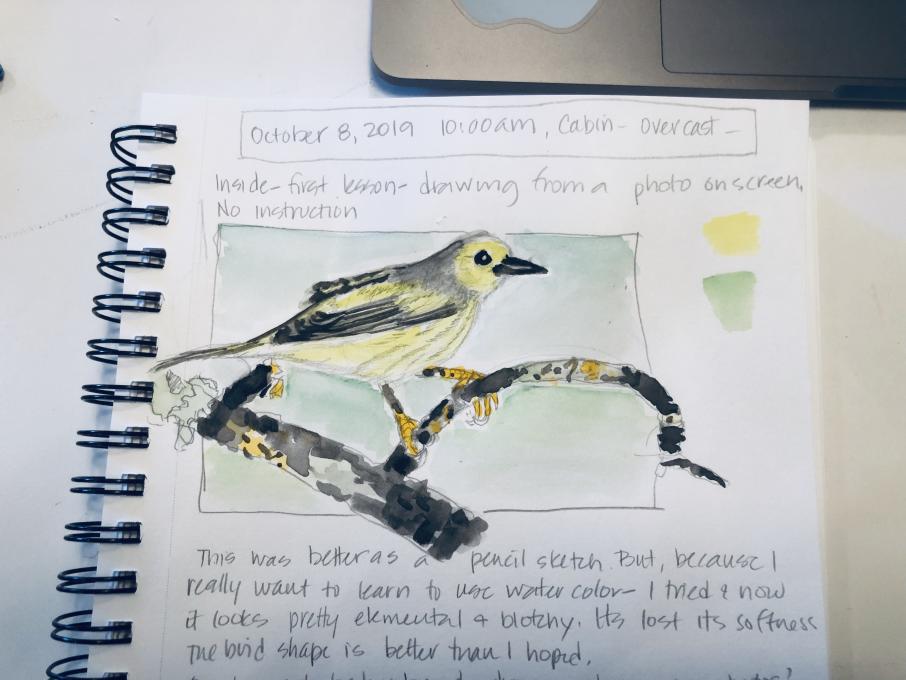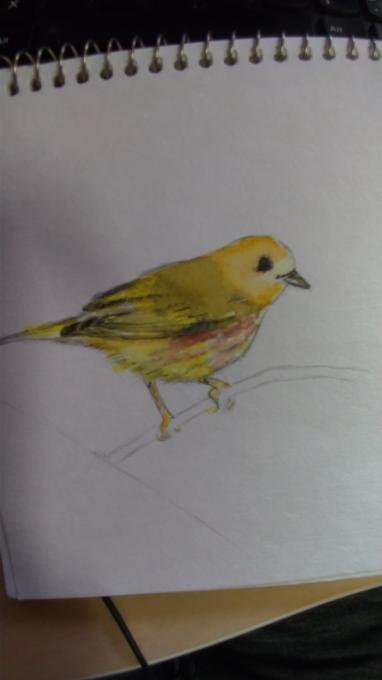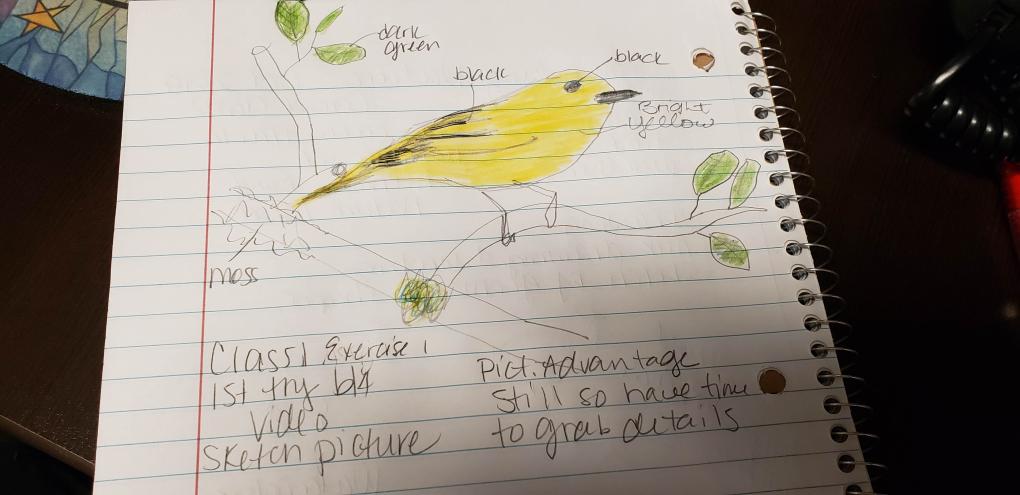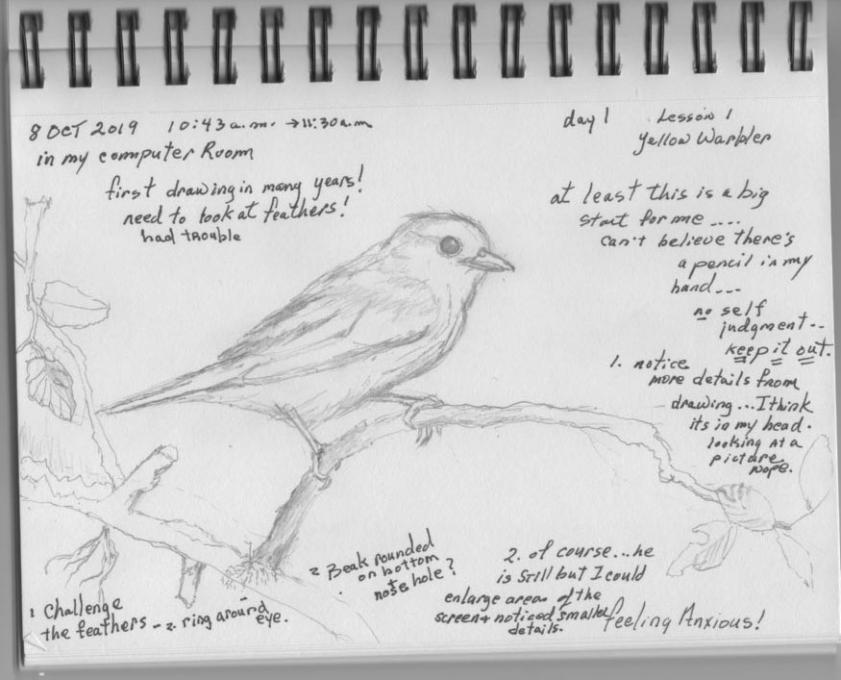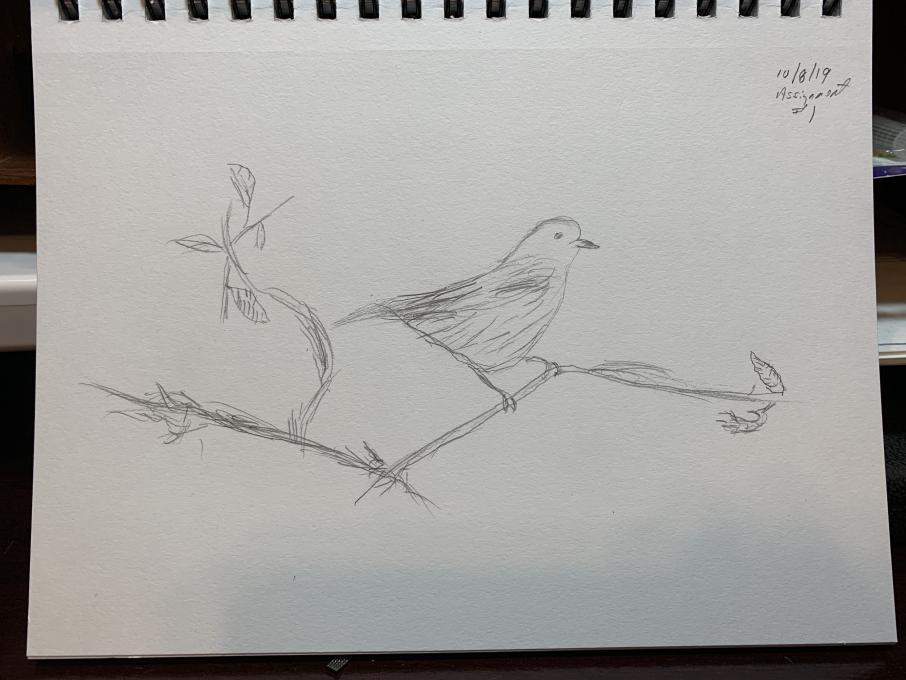The Cornell Lab Bird Academy › Discussion Groups › Nature Journaling and Field Sketching › Jump Right in!
-
I was glad to start with a still object as a photo. This was my very first bird ever to draw! So I really had to think out of my normal site to view a photo. I tried to measure in my mind distances in order to get perspective.
How do you draw feathers? Wow that one baffled me. Also to relay softness in the body didn't work. How do you draw softness?
Yellow legs was something I would have missed if not drawn.
-
Great sketch for a first time bird. I also liked your observations / notes.
-
-
Drawing the photo was not easy for me. I worried about getting the proportions and shapes right and it was challenging to get the positioning of the feet right. Good thing I could use an eraser! I had difficulty getting the bird’s tail to arch up. My second attempt was slightly better in capturing the bird’s stance.
Because I was drawing the bird I paid more attention to reddish brown streaks on the warbler’s breast and the contrasting colors of its feathers. I think learning to be more aware of the details and variations in coloration will make a difference when nature journaling. Also I am learning to have a greater appreciation of how birds stand and move.

-

-
It’s challenging to get the right proportions for the head and body, and the correct angles, but I look forward to developing those skills so I can sketch birds more accurately and quickly. I loved exploring the feather groups and how they overlap. Feathers almost look furry. And bird feet are crazy interesting - such long toes. I wouldn’t have noticed the subtle colors and feather groups if I hadn’t try to draw it.

-
I always find birds challenging. Even though they are made up of simple geometric shapes, they are tricky! I started by trying to identify simple shapes, and then I went back in with pen and did a more true outline of the bird with minimal texture for the different feathers. Sketching initial shapes was challenging, and going back in afterwards felt easier. So maybe sketching the shapes first was helpful...?
If I hadn't been asked to draw this bird and had just seen it, or perhaps taken a photo, I might not have noticed the beautiful little branch it was on. I just loved the different colors and varieties of lichen on that branch! Natural journaling certainly helps you take in general impressions of things as well as the tiny details.

-
I like drawing from a photo. The correct shape of the bird, it’s beak, and feather details were most challenging.
The very small details in the different feathers and the branch I only noticed when trying to draw them. The details are what makes the image so beautiful.
only noticed when trying to draw them. The details are what makes the image so beautiful. -
I'm in my late 60's and just beginning to learn to draw, so drawing this little bird was a fun challenge. If I hadn't had a photo to work from, I probably would just have a drawing of an empty branch and maybe a big oval for the bird. I don't think I could have captured much detail other than size and color on a live bird. I certainly would not have seen all the shading on the feathers or have been able to get any of the details correct. It was difficult to do even from a photograph.

-
I really like the way you used short squiggly line to show texture on the branch. You did such a good drawing for someone just beginning to draw.
-
@Deborah Thank you Deborah. It's been such a revelation to find that I could do something other than little stick figures. I am definitely still at the beginning of learning--just starting to study about shading and perspectives. It's so much fun. You did a great job with the watercolors on yours.
-
@Penny Thanks it's a journey. Looking forward to and excited about seeing where we all go!
-
-

-
1. I have no problem drawing from photos; I have done it before. My challenge was loosening up the hand muscles. They felt tight and not flexible. I couldn't get the eye-hand relationship to the drawing. I guess that comes with practice.
2. Later, I noticed the dried tree fungus on the branch. The fact that the fungus is dead might say something about the environment. It is important to notice details. Developing the skills of art is to help one to "see" rather than to "look."

-
Drawing was challenging, particularly the sizing and spacing of the complete drawing, then the bird shape and beak I found difficult. Many details of the photo where more obvious when drawing the bird.
-
It is much easier to draw from a picture, not rushed and subject is not moving! I can go back and redo, or add what i missed. The dark lines on the bird's breast would not have been evident had I not been trying to draw it, and may have been important if the drawing was going to be used to make a specific identification.
-

-

It was difficult to get the proportions correct for all the features I thought, e.g., distance between the eye and the bill, etc. Details on the feet I hadn't noticed until I tried to draw them. It may not be necessary to capture every detail if you just want to create an overall impression of the bird as you saw it. -
Unable to download mine but I enjoyed seeing everyone's drawings . Drawing from a photo is a great way to start - a big plus the bird sitting still LOL - I can see I have lots of room for improvement with my sketch - I'm looking forward to continuing with this course
-
I liked drawing from photo. Nice to see a warbler holding still! It seemed like I was paying too much attention to little details and not enough to the overall sense of the bird.

-
1. I wanted to be happy with the contour and relative proportions of the bird before I started rendering the details, which is usually my favorite part of drawing. It was challenging to be patient and focus on the posture of the bird
 .
.
2. I became familiar with the anatomy of wing feather layers on the bird, which I otherwise would be unaware of. I also wouldn't have noticed the lichen on the branch until I had to decide whether to try drawing it or not! All components of ecosystems are important, and while journaling you have to decide what is relevant to the story they're trying to tell.-
Nice drawing. I like how you used the shadows and dark lines.
-
Great sketch and observations. I really liked the values you added to create the form.
-
Beautiful detail! Is this all done in pencil? And what sort of pencil if so?
-
@Rose Hi, thanks, yes, all pencil! I think I mostly used an HB, 2B, and a 5B, and then I used a 0.5 mechanical pencil around the tiny feet to get finer lines and be more exact.
-
@Amanda Thanks for the info! I just used a mechanical pencil but I need to go raid my art drawer and see what I have. And I foresee a trip to an art store in my future
-
I have drawn from photos before so that wasn’t the challenging part. But I am usually just drawing a general outline to paint, so the challenging part was to know when to stop with the detail. My goal in this course was to be able to sketch quickly so I tried to do this relatively fast and just stick with pencil though I really wanted to add color. I am detail oriented so I would have noticed most things, but I would say the shape of the bill and the head in particular I paid more attention to in having to draw it.

-
@Rose I put this in the wrong darn place and don’t know how to move it 🙁
-
@Rose I like the way you managed to capture the light on the beak!
-
@Coral Thanks, to be honest I want to do it all over again and go for more detail. I needed something to get me drawing/ painting again and I am loving this course so far, it is great to see what everyone is doing!
-
That is such a great, great drawing!
-
-

I am more comfortable drawing from a photo than real life. I felt pretty comfortable with my pencil sketch, but as I added watercolor I really felt like I didn't know how to do that.
In a photo you have all the time to go back and see what you might have missed. I finished, and then said, what's in the background, and then did the green wash. However, the photo shows a blurred background, and in nature you would have more detail to chose from. -
1. I feel I have more control drawing from a photo. The shape came more or less easy but I am not familiar with working with watercolors, I smudged the eye..
2. I wouldn't have noticed how lively the feet are
-
1 I'm wondering why it is much easier for me to accurately draw a birds head when the beak is pointed left than when it's pointed right. I'm curious if anyone else finds this challenging.
-
Are you right-handed? I think it’s a bit easier to work left to right following the natural arc of my hand as it moves across the page, so maybe it’s also easier to get the angles and proportions right moving from the tip of a beak toward the tail? Somehow when the bird faces to the right it feels more awkward.
-
-
I enjoyed just trying for my first time. It was an enjoyable experience for me. I am excited to do more.
-
I was excited to begin, but my mental drawing and actual drawing had almost no relationship to each other.
-
Don’t despair, this is just the beginning! I sure understand the sentiment though.
-
-
1. Easier to get details when the bird is still. Made notes to indicate color. really struggled with the bill and feet.
2. light and shadows. missed the red on the breast.
-

-
I love your comments...
-
@Tania Me too!
-
It never occurred to me to enlarge the screen for more details. My kids would only shake their heads. Love what you did.
-
-
1. Bill and head shape are difficult to get correct.
2. The tree gave a hint to the time of year. Once again I would not have paid attention to head shape and bill as well as field marks. All these things are important for journaling and identification. Birds in photos are not moving as in field. -

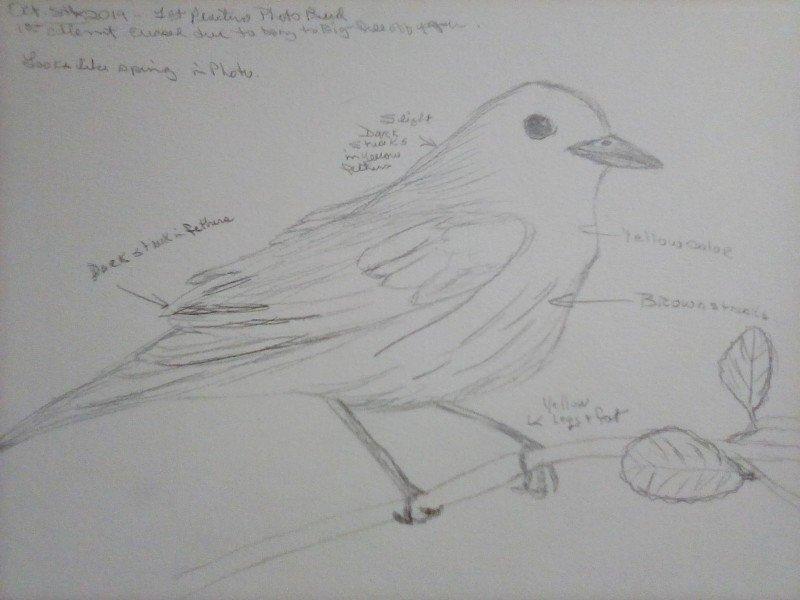
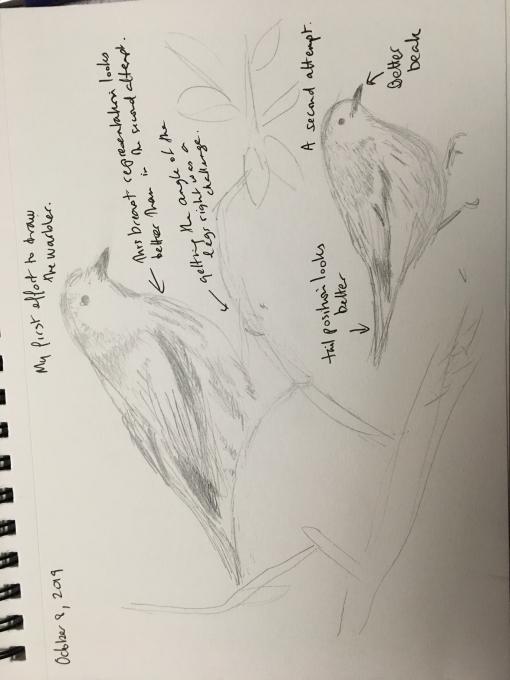
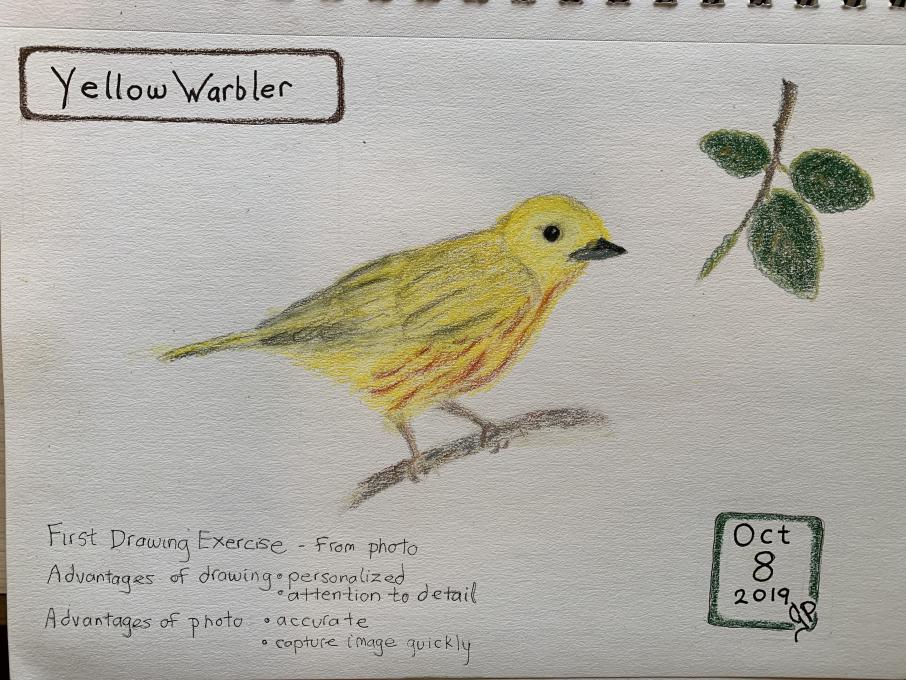
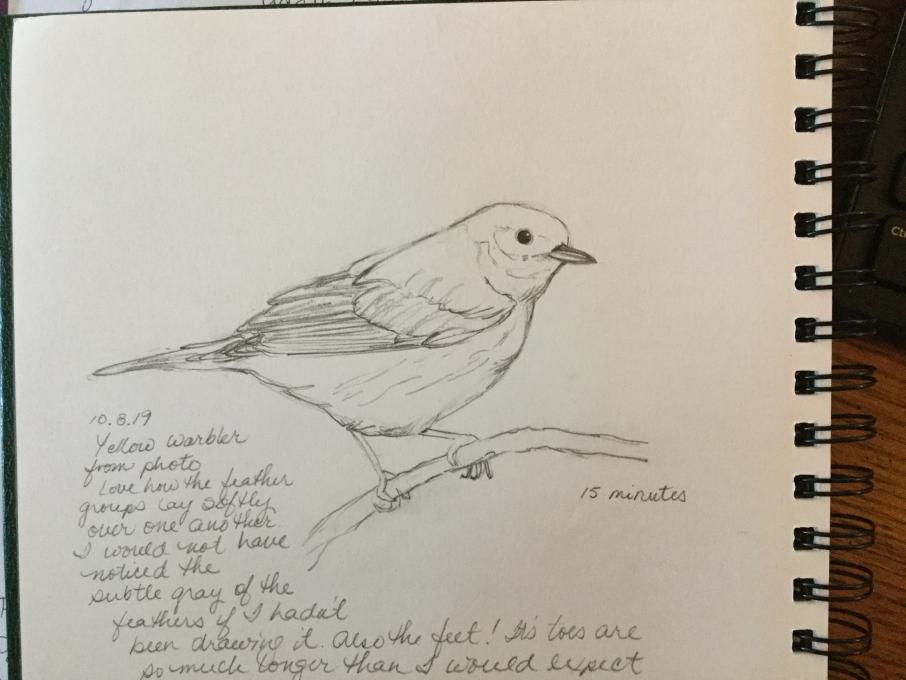
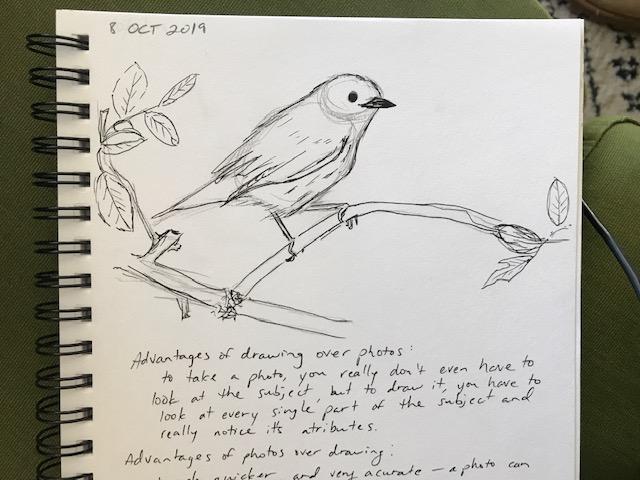
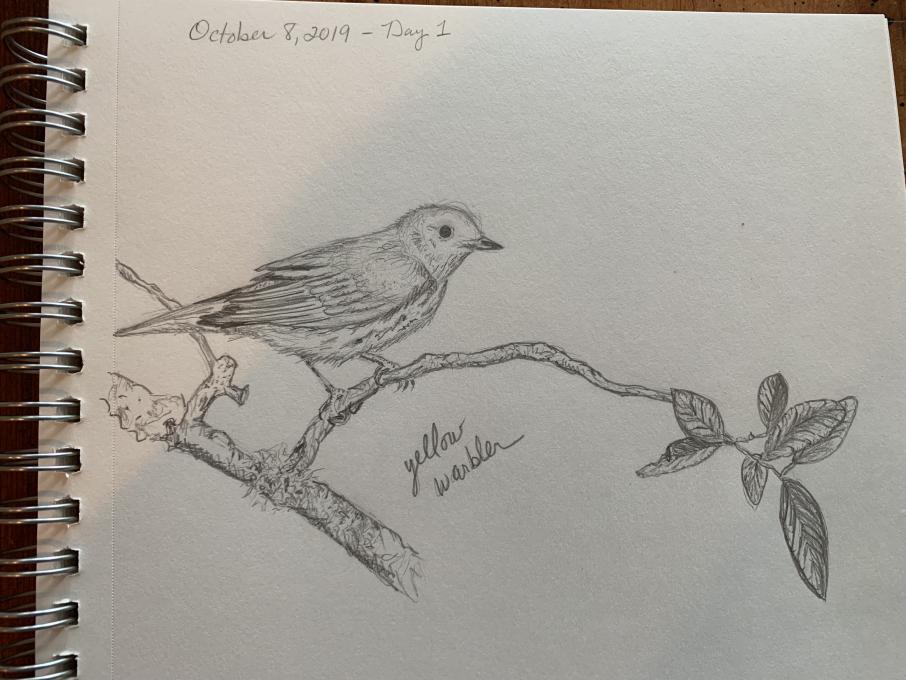 only noticed when trying to draw them. The details are what makes the image so beautiful.
only noticed when trying to draw them. The details are what makes the image so beautiful. 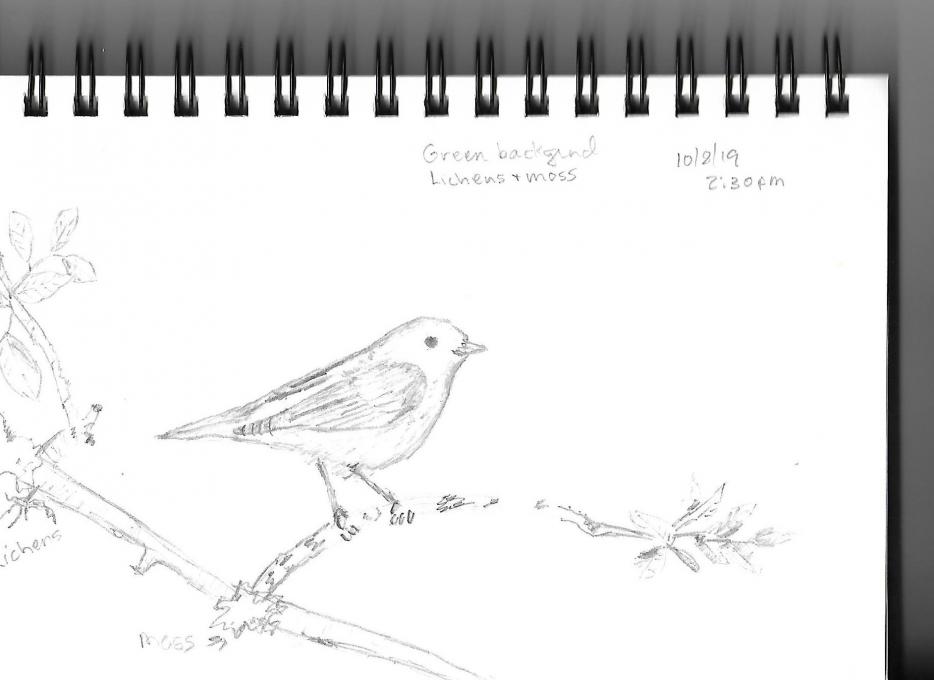
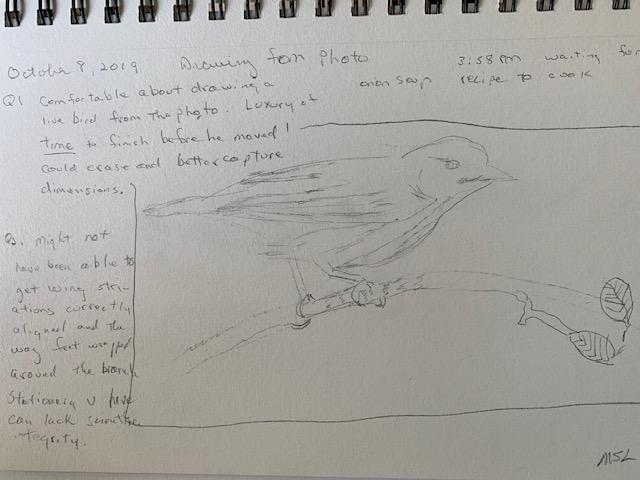
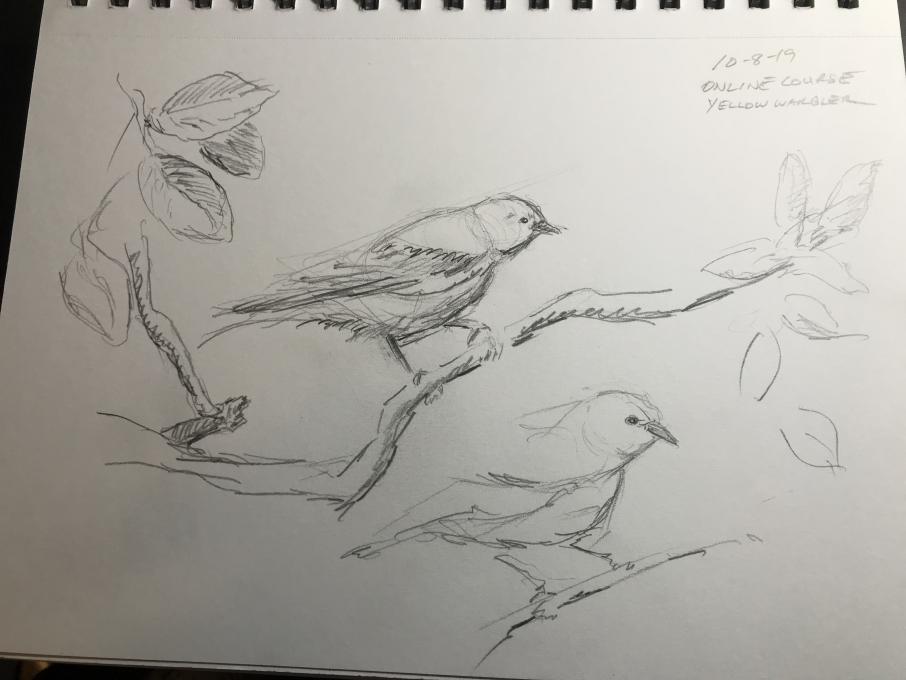
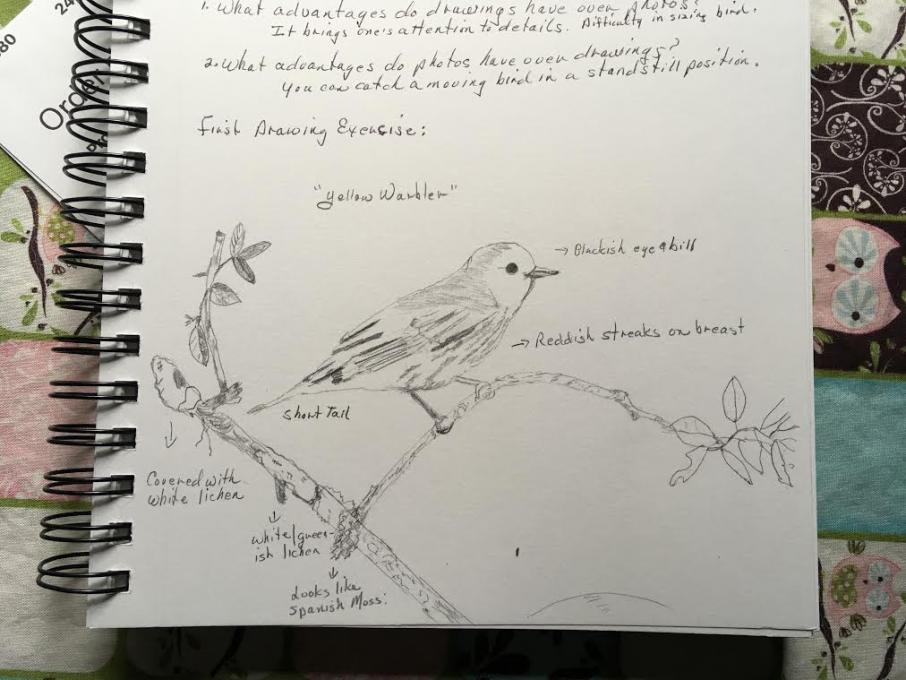
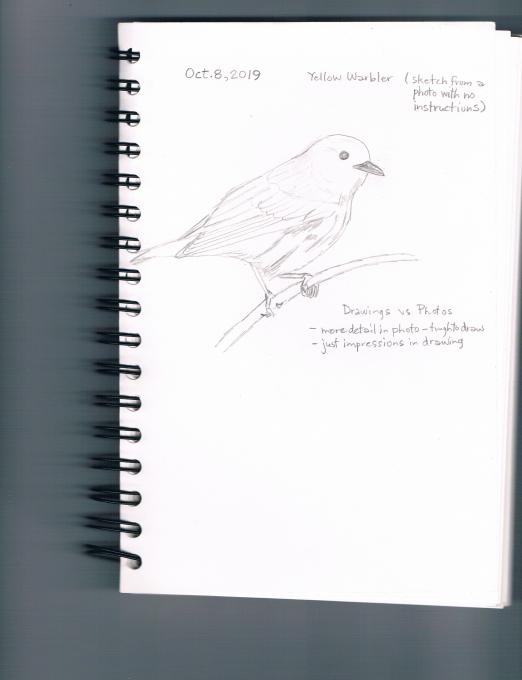
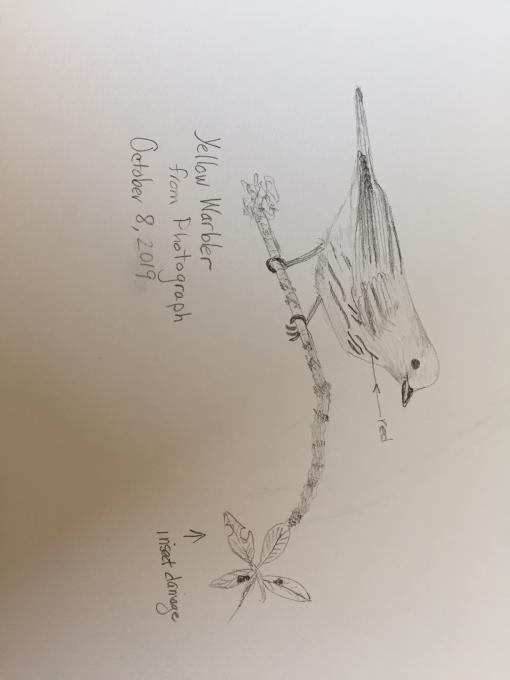
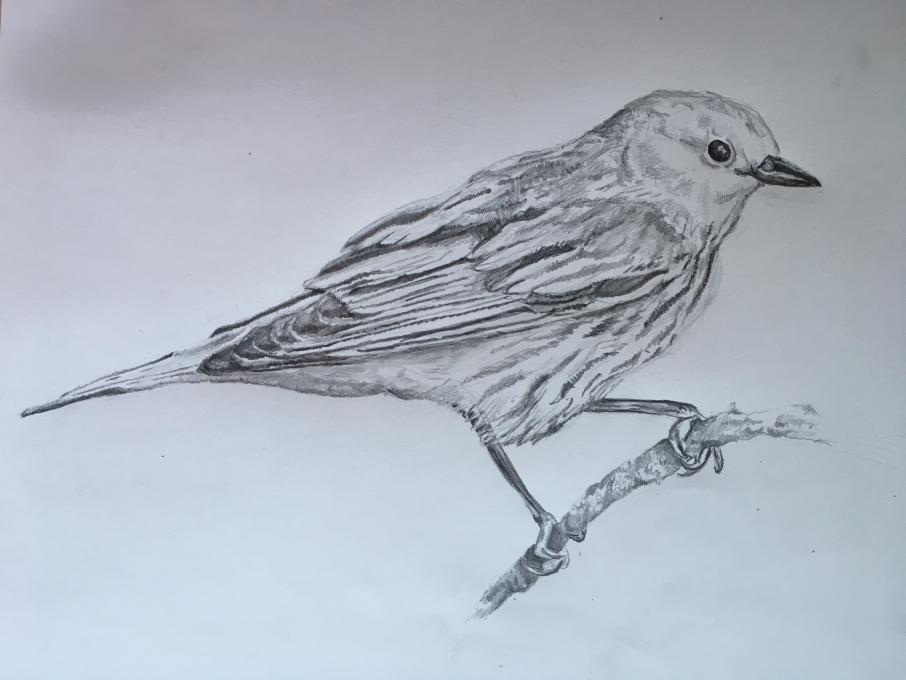 .
.